I've finally come to accept that Circling Game is a great way for a person to discover an energized yet neutral position. It is also an excellent way to build a horse's sense of patience and responsibility.
The thing is, I feel that a good Circling Game is probably the most complex and least "natural" of the 7 Games of Parelli Natural Horsemanship.
My speculation is that many folks can bumble through it in Level 1 (and perhaps L2) because their horses were previously "lunged" and have already been convinced that running around in circles is what they are supposed to do. Not so for my boys. I guess that lunging isn't a commonly used training technique for gaited horses!
In the last few days, I have begun to consider Circling in the same light as all of the other tasks that I've taught Guinness, and to let go of my expectation of failure.
Common sense dictates that a trainer/teacher break down a complex task into its components, in order to be sure that all parts are truly understood by the pupil. In the case of the Circling Game, the basic prerequisite skills are: energetic backing, a solid draw, sending the shoulder, and yielding the hindquarters. As Carol Coppinger taught in her recent clinic, there are many simple games that can be played to combine and refine these skills, before jumping into full Circling Game.
As I am becoming a better leader, Guinness is responding by becoming a Super Learner. I attribute this increase in my overall level of leadership to:
- becoming more particular while remaining pleased with him
- effective follow-through when he chooses to disregard my requests
- finding incentives which motivate him to seek the answer to the puzzles that I give him
- setting him up to "win" each small task
- keeping things interesting for him!
The exact game that we played this evening was: "Back out quickly, then circle at any gait until I call you in by yielding your HQ. If you come in before I ask, I will laugh, stroke your nose, then resend you the opposite direction - but NO cookie!" If he comes in when I request, I click & treat. When sending him, I exaggerate the tension by saying "are you ready?" with my energized body language, and then rapidly tagging the ground 3 times where he was standing. This results in his energized departure and happy body language.
Right now, my goal for him is to continue to circle in the same direction (at any gait) until I call him in. Once he really gets this, I will change the game to have him maintain a specific gait (with and without obstacles). Then I'll probably add in changes of direction, then later changes of gait. I believe that this will be a natural progression of learning that won't get confuse him. (I am open for input on this sequence.)
Tonight, he made it to 5 laps in each direction! He started out with large, fast circles that turned into small, tight circles as he tried to get my attention. After several laps his nose would run into me. Then, I would stroke him and send him back out in the other direction. It was pretty funny. When he finally put some effort into keeping going, I brought him in and gave him the "jackpot" of his dinner grain.
While playing with Guinness, I'm starting to feel as though I'm creating something with a very sensitive tool that I'm just learning to use. I'm trying to "ask" with smaller and smaller motions and the lowest energy, and am continually amazed at the quality of the responses that he offers me. It is very rewarding.



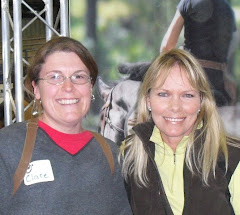




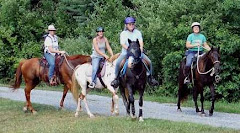

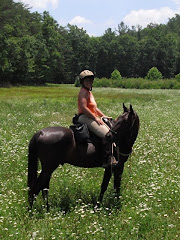
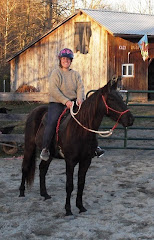
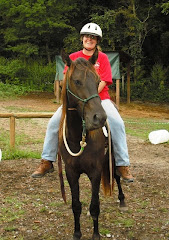
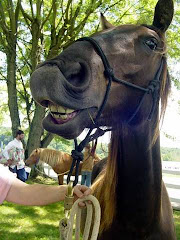

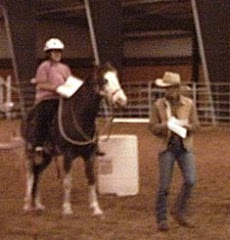

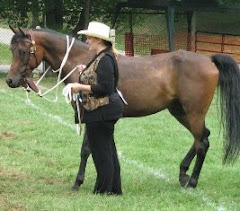
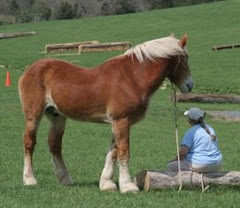


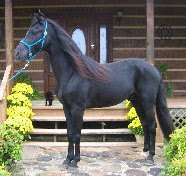
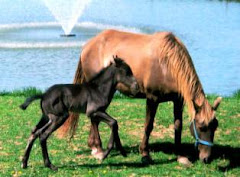
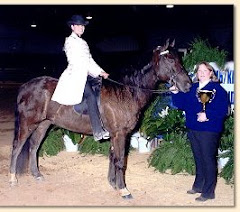
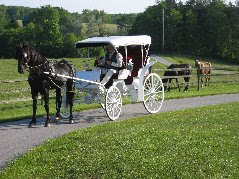
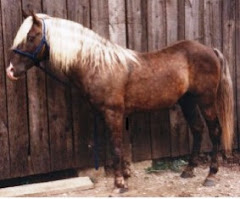




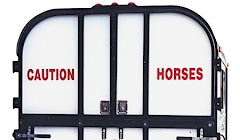
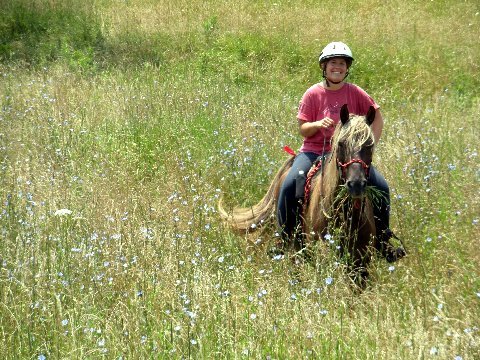
2 comments:
On your sequence for increasing the complexity of the circle game, keep in mind the four responsibilities of the horse:
1. Act like a partner
2. Maintain gait
3. Maintain direction
4. Watch where you put your feet.
They are in this order because this is the order you address them.
So, in your circle game, I'd go in the same order. Once he is acting like a partner, can he maintain gait? Once he maintains gait, can he maintain direction? When all that is good, can he watch his feet?
I'd get my change of gait solid before I did too much change of direction. Then I'd have change of gait and change of direction before I did too much with obstacles. Because when he gets confused you want the basics to be solid so he doesn't blow his confidence completely. Make any sense?
Thanks for your input, Lisa! :-)
Post a Comment